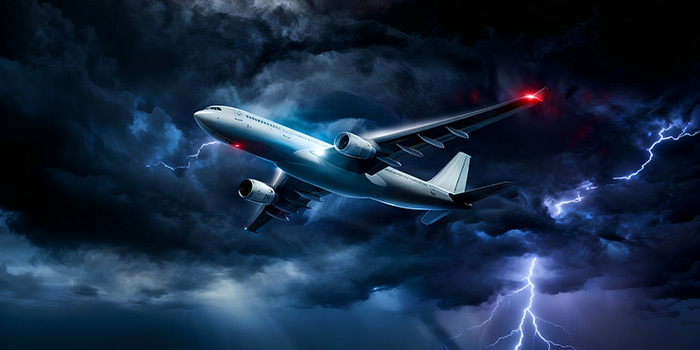Why Plane Turbulence Is Becoming More Frequent and Severe
11 Nov 2025
Highlights:
Airline passengers may be feeling turbulence more often — and more intensely — than in decades past, and science is pointing to climate change as a major driver.

Over the last 40 years, since satellite observations of the atmosphere began, the North Atlantic — one of the world’s busiest air corridors between the UK, US, Canada, and the Caribbean — has seen a 55% increase in severe turbulence. This includes both convective turbulence from storms and the harder-to-detect clear-air turbulence that occurs in cloudless skies.
Increasing Injuries in the Skies
While modern aircraft are structurally designed to withstand turbulence, the human toll is growing. Since 2009, the U.S. alone has recorded 207 severe injuries from turbulence, most of them among cabin crew.
The Climate Connection
Two primary climate-related factors are at play:
- Warmer air holds more moisture, fueling stronger and taller thunderstorms that create dangerous convective turbulence.
- Intensified jet streams, powered by global warming, generate more frequent and unpredictable clear-air turbulence — a type that cannot be spotted by radar and is challenging for pilots to avoid.
Economic and Operational Impact
Turbulence costs the airline industry millions each year in aircraft inspections, delays, diversions, and medical emergencies. In-flight detours also increase fuel consumption, operating costs, and carbon emissions.
Navigating a Bumpier Future
To counter these risks, airlines are:
- Enhancing turbulence forecasting tools.
- Adjusting flight plans to avoid turbulence-heavy areas.
- Modifying cabin safety procedures to reduce injury risk.
The Role of Innovation
Researchers are exploring next-generation solutions — from AI-powered prediction systems to biomimetic wing designs and even turbulence-cancelling technology — offering hope that the skies of the future will be smoother despite a warming climate.
How AviaPro Can Support
At AviaPro, we work with airlines, airports, and aviation authorities to integrate climate-resilient operational planning. From route optimization strategies to crew training programs and technology integration, we help our partners reduce turbulence-related risks while maintaining efficiency and passenger safety.
Sources
• Williams, P. D., & Joshi, M. M. (2013). Intensification of winter transatlantic aviation turbulence in response to climate change. Nature Climate Change.
• BBC News. (2024). Turbulence becoming more frequent and severe due to climate change.
• U.S. Federal Aviation Administration (FAA) Turbulence Injury Data.
• National Oceanic and Atmospheric Administration (NOAA) Jet Stream Research.
AviaPro Newsroom
+1 416-544-9969
info@aviaproconsulting.com

Editorial Contacts